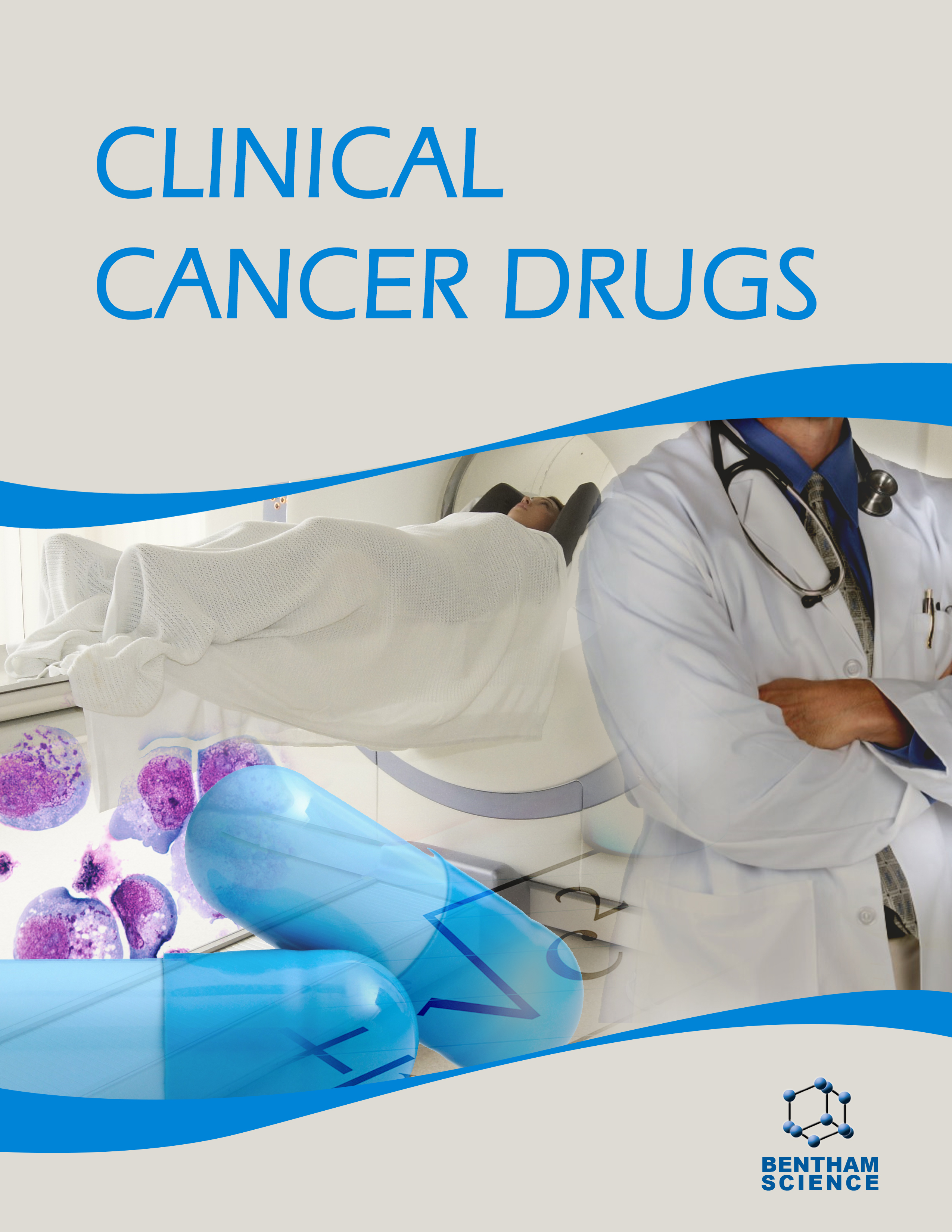-
oa The Importance of Lamivudine Therapy in Liver Cirrhosis Patients Related HBV with Advanced Hepatocellular Carcinoma Receiving Hepatic Arterial Infusion Chemotherapy
- Source: Clinical Cancer Drugs, Volume 2, Issue 2, Oct 2015, p. 112 - 118
-
- 01 Oct 2015
Abstract
Purpose: We have previously reported that continuous hepatic arterial infusion chemotherapy (HAIC) might be more effective for advanced hepatocellular carcinoma (aHCC) in patients with liver cirrhosis (LC) related to HCV infection (C-LC) or alcohol abuse (A-LC) than in patients who had LC related to HBV infection (B-LC). The aim of the present study was to retrospectively assess the efficacy of lamivudine therapy for B-LC patients with aHCC undergoing HAIC. Methods: Seventeen adult Japanese B-LC patients with aHCC were treated by HAIC with or without lamivudine (100 mg/day) between 2002 and 2008 at our hospital. Their tumors were inoperable according to computed tomography findings. HAIC (LV at 12 mg/hr, CDDP at 10 mg/hr, and 5-FU at 250 mg/22 hr) was given via the proper hepatic artery every 5 days for 4 weeks using a catheter connected to a subcutaneously implanted drug delivery system. Results: Nine of the 17 patients received lamivudine at a dose of 100 mg/day together with HAIC (LAM group), while 8 patients did not receive lamivudine and only had HAIC (non-LAM group). The response rate was 12.5 in the non-LAM group and 0.0 % in the LAM group. However, the survival of the LAM group was better than that of the non-LAM group, although there was no significant difference between them. The median survival time of the LAM and non-LAM groups was 310 and 157 days, respectively. HBV-DNA levels were significantly lower after chemotherapy compared with that before chemotherapy in the LAM group. In the non-LAM group, the percentage of Th2 cells before HAIC and after HAIC was significantly higher than in the control group. However, the percentage of Th2 cells in the LAM group after HAIC was not different from that in the control group, although it was significantly higher in the LAM group than in the control group before chemotherapy. Conclusions: These results indicate that lamivudine therapy may prolong the survival of BLC patients receiving HAIC for aHCC by reducing HBV-DNA level and inhibiting the increase of Th2 cells in host immunity.


